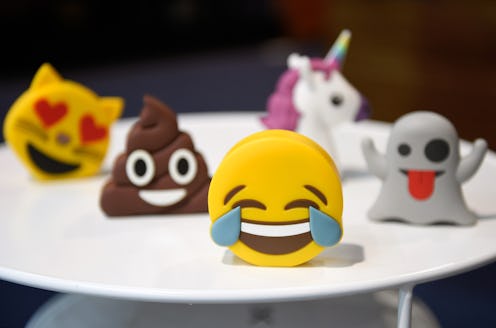Have you ever wondered where emojis come from? Long before the ubiquitous little pictographs infiltrated our society and began their steady takeover of both the digital and physical worlds, we relied on something else — something slightly less high-tech — when we wanted to communicate through pictures in an otherwise text-based medium. I’m talking, of course, about emoticons — those little arrangements of colons, parentheses, and other punctuation marks that look like faces to our pattern-loving minds. But little did we know that they have a deep, rich history that goes back even further than most of us probably could have guessed.
For those of you who are curious about the history of emoticons, Mashable has put together a handy dandy little video walking us through the salient points. From their humble beginnings way back in the 17th century all the way to the advanced forms they’ve taken on in the present, one thing’s for sure: Emoticons aren’t going away anytime soon.
The whole video is worth watching, so zip on down below to see it — but no worries if you’re in a place where you can’t watch videos right now. It happens. We’ve got you covered. Here’s a brief timeline of how we got from point A to point B:
First Known Usage: 1648
The 1648 print edition of a poem by Robert Herrick featured misplaced colon that might have been a printing error—or might have been intentional. We’re not totally sure which, but if it was an accident, the line in which it appeared couldn’t have been more fortuitous.
First Known Intentional Usage: 1881
A satirical article published in Puck Magazine in the late 19th century demonstrated how different emotions might be expressed based on the layout of your typography.
“The Snigger Point”: 1887
Ambrose Bierce elaborated on the Puck Magazine idea a few years later in the San Francisco Examiner. Also satirical, his article suggested we might need to create new punctuation marks to indicate humor or irony (we’ve already got the exclamation point, so why not the snigger point?). The idea didn’t take off — but I’ll note here that this is how I tend to use emojis and emoticons, and I’m willing to bet that I’m not alone. Maybe Bierce was more prophetic than we thought.
First Appearance on a Computer: 1982
In 1982, Scott Falhman suggested something similar to Bierce’s idea on a university computer science message board (remember those?): Constructing smiley faces, frowning faces, and winking faces out of punctuation marks might help those reading the boards avoid confusion around sarcasm or other text-based jokes.
Proliferation: 1991 – Present
The term itself first appeared in print in the New York Times in 1991; ten years later in 2001, it found its way into the OED, and a year after that, it was added to the Urban Dictionary. They evolved into emojis in Japan in the late ‘90s; then the Unicode standard helped them spread to the rest of the world in 2010, and the rest as they say… I mean, they’ve even got grammatical rules of their own now. No more are they mere punctuation; they’ve become a language unto themselves. Neat-o, right?
Watch the full video here:
Images: Mashable/YouTube
